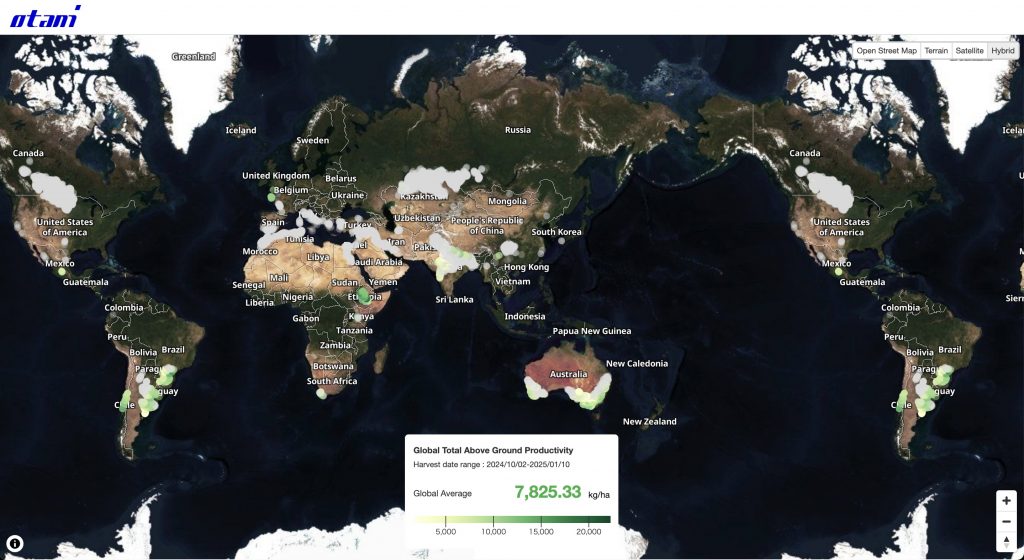Supporting the Grain, Finance, and Media Industries with Reliable Satellite Data

Yokohama, Japan – January 14, 2025 – Otani & Co. is pleased to announce the launch of “O2 Grain Pulse – Spring Wheat”, a global crop production index based on satellite data. Utilizing data from sources such as Copernicus satellites, this platform provides timely and consistent insights into global spring wheat productivity.
Key Features of “O2 Grain Pulse – Spring Wheat”
- Global and Localized Data:
- Offers metrics for Global Total Above Ground Productivity and localized Total Above Ground Productivity (TAGP) at two resolutions:
- 12.5 km x 12.5 km grids (approximately 30,000 globally)
- 300 m x 300 m grids (approximately 30 million globally)
- Accessible Data for Analysis:
- Users can download TAGP data in CSV format, enabling comparisons across regions and countries. The consistent calculation methodology ensures reliable cross-border analyses.
- Additional Metrics for High-Resolution Grids:
- The 300 m x 300 m grids provide further details, including:
- Estimated total above-ground productivity within the grid
- Field area measurements• Predicted harvest quantities
- Estimated market prices for wheat and flour
- Regular Updates:
- Data is refreshed daily for each grid, allowing users to combine datasets and generate new insights based on current information.
- Broad Applications:
- The platform’s datasets can be applied to:
- Forecast commodity prices
- Analyze stock market trends (e.g., Nikkei 225)
- Evaluate the performance of companies in milling, food production, and dining sectors
- Potential Future Enhancements:
- Otani & Co. is considering integrating tools to generate detailed reports using imported datasets and satellite imagery, providing additional value for users.
Service Overview
- URL: https://otani.co/o2/grain-pulse/spring-wheat/
- Pricing: Free of charge
- Coverage:
- Global, with approximately 30,000 grids at 12.5 km x 12.5 km resolution
- Approximately 30 million grids at 300 m x 300 m resolution
- Target Crop: Spring Wheat (including winter wheat in the Southern Hemisphere)
Press Release
English: https://otani.co/press-release/o2-20250114-EN.pdf
Japanese : https://otani.co/press-release/o2-20250114-JA.pdf